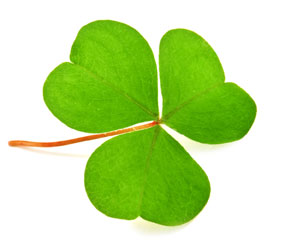Beyond the beer
The real story behind St. Patrick’s Day
Laura Lushington
Web Editor
You wear a green shirt, drink green beer and put on the accent for a night.
And maybe, just to prove you really are one-eighth Irish, you’ll sip a Guinness.
It’s St. Patrick’s Day and it’s time to party — especially when it lands on a Saturday.
But, have you ever considered what St. Patrick’s Day really means to the Irish? No, it isn’t a day dedicated to dark draughts and glittery shamrocks. The North American celebration actually has little to do with the man it’s meant to honour.
The story of St. Patrick
St. Patrick, the patron saint of Ireland, was born in Britain around 390 AD. When he was 16, Patrick was captured by Irish raiders and taken to the Emerald Isle as a slave to herd sheep. After six years of enslavement, Patrick escaped and somehow made his way back to his family.
After returning home, St. Patrick’s story says he then heard a voice telling him he must go back to Ireland. From there, he became ordained as a priest and began spreading the message of Christianity throughout Ireland.
St. Patrick died on March 17, 461. He is buried in Downpatrick, Ireland at the Down Cathedral.
What it means to the Irish
“He is highly revered in Ireland,” said Deirdre Halferty, president of Irish Cultural Society in Calgary.
She added that St. Patrick’s Day is celebrated all around the world because the Irish have immigrated near and far, just like St. Patrick did.
A connection is also made to St. Patrick because of the strength and bravery he showed while being enslaved and then escaping.
“Being Irish, I guess, is like a phoenix that comes out of the ashes,” said Halferty who moved to Calgary from Ireland 25 years ago.
“We always survive all adversity and we always see the positives. We don’t belabour our hardships, we get on with it.”
Halferty said in Calgary, a group of Irish immigrants always goes to St. Mary’s Cathedral on St. Patrick’s Day to acknowledge its origins.
“Initially it was always a refresh of Christianity and always reminded (people) of what being a Christian was all about on an annual basis,” she said.
“It has become diluted into being a day for Irish people to be Irish.”
The North American tradition
One of the biggest mistakes Halferty says she sees North Americans make about St. Patrick’s Day is the shamrock. She says that the shamrock is not a four-leaf clover — it is a three-leaf shamrock instead. This is because St. Patrick used the three-leaf version to represent the father, son and Holy Ghost in Christianity.
Adding green dye to a light coloured beer is another tradition that Halferty said is strictly North American.
“I’ve never, ever seen a green beer in Ireland,” she said.
Halferty said there are only two proper ways to refer to this celebration: St. Patrick’s Day and St. Paddy’s Day.
She said it is never to be referred to as “St. Patty’s Day.”
“That’s a burger as far as I’m concerned,” she laughed.
Where to celebrate
The Irish Cultural Society will be having an open house on St. Patrick’s Day starting at 6 p.m. It costs $10 to get in and $7 for a pint of Guinness.
Fast Facts
• According to the 2006 census by Statistics Canada, Calgary counted 175,575 people with some Irish descent and 4,354,155 in all of Canada.
• The first St. Patrick’s Day was celebrated in 1759 by Irish soldiers serving with the British army.
• Montreal has held a St. Patrick’s Day parade every year since 1824. This year’s will be held on March 18th.
• In Manitoba, there is a three-day cultural festival celebrating the occasion put on by the Irish Association of Manitoba.
• The shamrock is a registered trademark of the Republic of Ireland.




